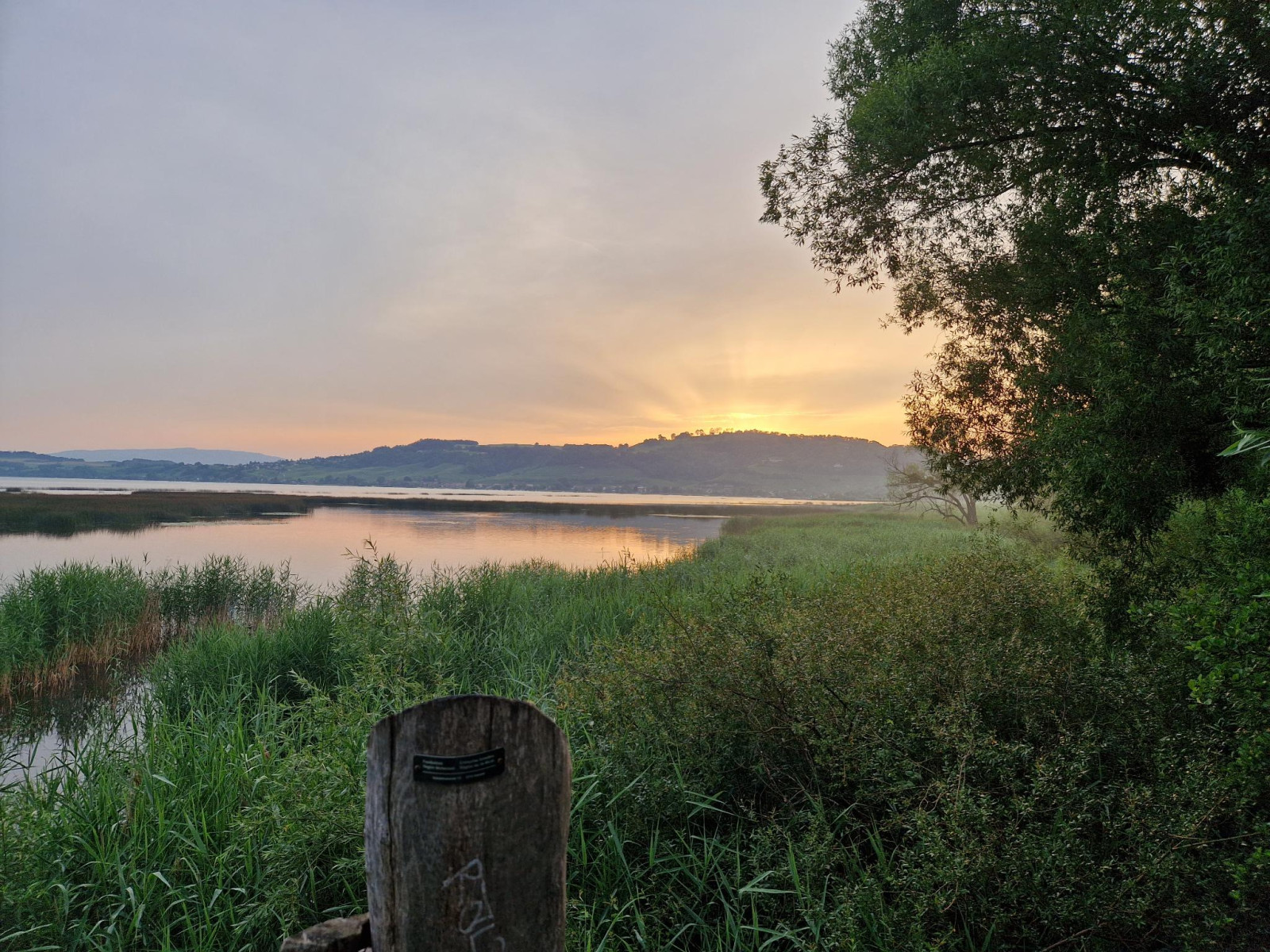Charger images
Les formats d'image autorisés sont de type jpeg, png ou gif
La taille maximale du fichier doit être de 20MB


Beautiful wooded shore section on Lake Murten, still an insider tip and offers many of the observations the better-known neighbouring areas are famous for.
The Chablais lies between the prominent and ornithologically interesting Mont Vully and the small Löwenberg on the northern shore of Lake Murten. The deciduous forest there is only a hundred years old. It was created by artificially lowering the water level at the end of the 19th century. A wide reedbed extends into the lake, which can be partially observed from platforms.
The beautiful footpath lends itself to practising bird song identification: The view of the reedbed and the lake is often obscured, from where Rousserolle turdoïde, Locustelle luscinioïde, and Rousserolle effarvatte call. Loriot d'Europe, Fauvette des jardins, and Rossignol philomèle sing in the high treetops and thickets. Pic épeichette, Pic mar, and Pic noir also breed here. A view from the platforms is not only rewarded with spectacular sunsets. Râle d'eau, Martin-pêcheur d'Europe and, with a bit of luck, Blongios nain can also be seen. Sterne pierregarin, which breed on the artificial raft at the northern end of the area, often fly past.
In future, it may also be possible to observe the Balbuzard pêcheur more often, which is to be reintroduced to the Central Plateau. Cygne chanteur, Canard souchet, Canard siffleur, and Bécassine des marais are not uncommon winter visitors. Finally, among the rarities observed here are the Fuligule milouinan, Fuligule à bec cerclé, Faucon kobez, Jaseur boréal, Harle piette, and Bécassine sourde.
The Le Chablais area can be reached by train either from Sugiez in the north or Muntelier-Löwenberg in the south. If you are coming from Sugiez, it is worth going first to the quay of the Canal de la Broye and looking to the left at the breeding platforms of the Sterne pierregarin. The path through the area that is closest to the water and from which you can reach the observation platforms can only be explored on foot (a cycle path runs parallel to it). Numerous information boards along the way explain the natural area.
Many mosquitoes breed here at the corresponding times of year. There are fewer of them on the platforms, but it is definitely advisable to take mosquito spray with you on the way.
Votre feedback sera transmis à l’auteur.rice de cette zone et à l’équipe éditoriale de Birdingplaces, qui l’utiliseront pour améliorer la qualité des informations. (Vous souhaitez publier un commentaire visible en bas de page ? Fermez cette fenêtre et choisissez l’Option 1 : « Publier un commentaire, un conseil ou une observation ».)
Veuillez fournir des suggestions d'améliorations ou d'ajouts au texte de ce site ornithologique.
Veuillez fournir vos suggestions d'améliorations ou d'ajouts à la carte.
Veuillez fournir des suggestions d'améliorations ou d'ajouts à la liste des oiseaux.
Cliquez sur l'icône de l'oiseau () Insérez les noms d'oiseau dans votre langue. Ils seront automatiquement traduits pour les autres usagers !